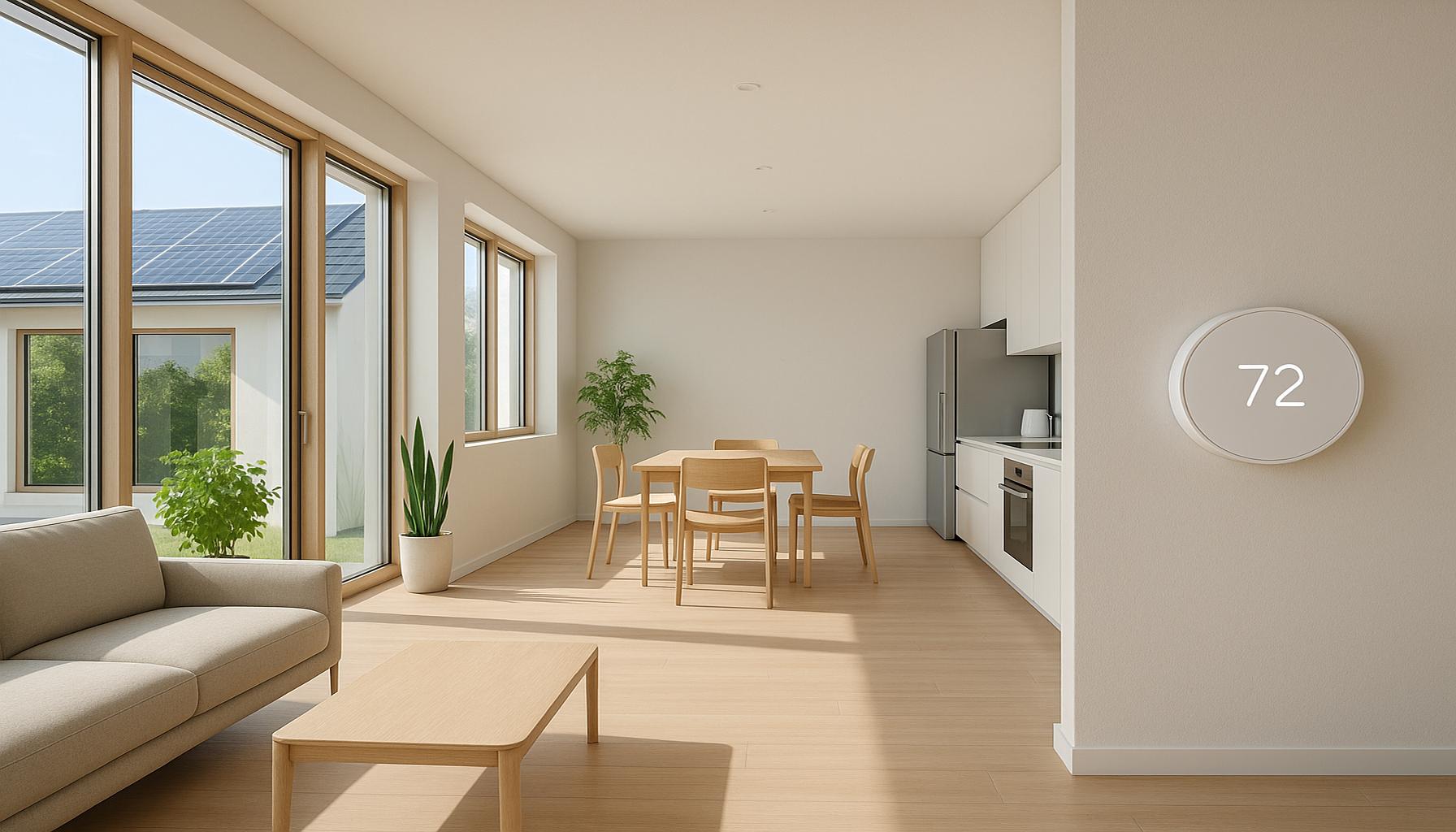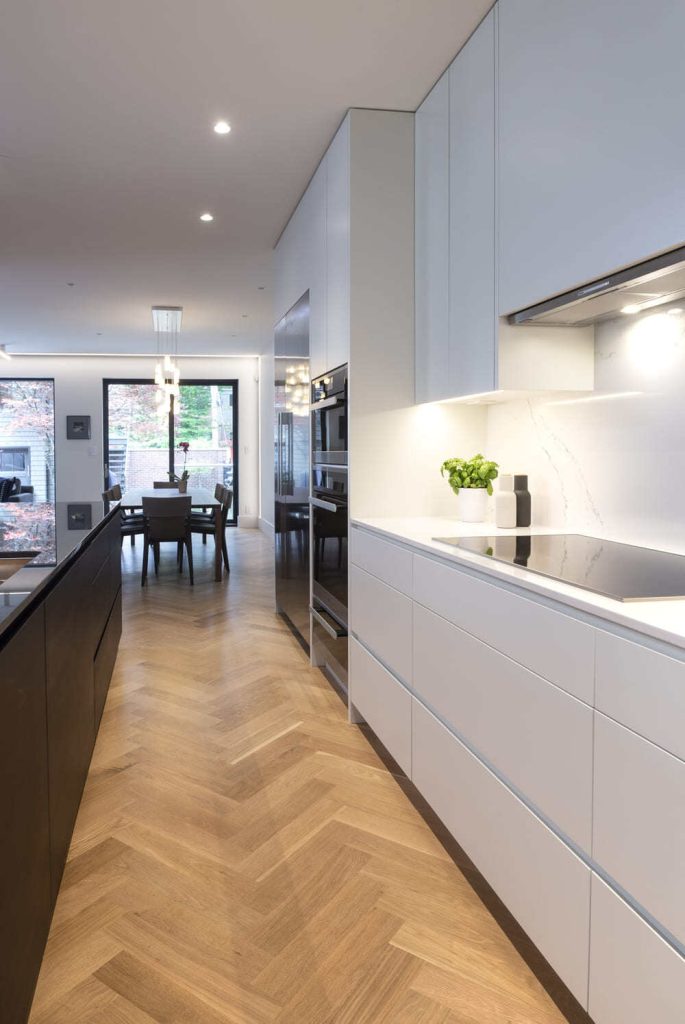The Influence of Minimalism on Energy Efficiency: Creating a Home that Saves Time and Resources

Understanding the Flexible Nature of Minimalism
In an era where environmental sustainability is becoming paramount, the concept of minimalism is gaining traction. This philosophy not only transforms our approach to space but also significantly impacts our overall resource consumption. By intentionally choosing to focus on less, we naturally adopt behaviors that foster energy efficiency, making a positive impact on both our homes and the planet.
The Principles of Minimalism in Energy Conservation
The essence of minimalism encompasses several principles that promote energy-saving practices. Among these, one of the most crucial is the integration of energy-efficient appliances. For instance, Energy Star-rated devices use at least 10-50% less energy than standard appliances. Making the switch can reduce utility bills while lowering carbon footprints, directly aligning with both minimalistic and eco-friendly lifestyles.
Another critical element is harnessing natural lighting. Designing interiors that maximize daylight through strategically placed windows and skylights not only brightens living spaces but also diminishes reliance on electricity. For example, homes in sunny states like California often feature open layouts and light-colored walls to reflect sunlight, effectively reducing the need for artificial lighting.
Landscaping and Outdoor Efficiency
When considering outdoor spaces, minimalism encourages simplified landscapes. This approach involves selecting native plants that require minimal watering and maintenance, which is particularly beneficial in water-scarce regions. Xeriscaping, the practice of landscaping to reduce or eliminate the need for irrigation, perfectly embodies this principle, promoting both aesthetic appeal and resource conservation.
Quality Over Quantity
Minimalism also champions a philosophy of quality over quantity. By investing in durable materials — such as sustainably sourced wood, metal, or stone — individuals can reduce waste and minimize the need for replacements. This not only curbs excessive consumption but also contributes to a more sustainable cycle of use.

Coupled with this is the idea of mindful consumption. This practice encourages individuals to critically assess their needs before making purchases. For instance, a consumer might opt to buy a single high-quality jacket rather than multiple, lower-quality alternatives, ultimately reducing their overall environmental footprint.
Creating Mindful Spaces
The intersection of minimalism and energy efficiency offers innovative strategies to create living spaces that not only conserve resources but also save time. Simple, functionally designed homes can lead to easier upkeep and a reduced need for energy use. With the ever-pressing challenges of climate change, adopting this harmonious blend of minimalism also contributes to broader sustainability goals.
As you explore these principles further, consider how incorporating minimalism into your daily life can transform your environment into a mindful sanctuary, fostering harmony between personal enjoyment and global responsibility. Embracing minimalism is not just about decluttering; it’s about creating a lifestyle that appreciates the beauty of simplicity and the power of efficiency.
DIVE DEEPER: Click here to uncover the emotional benefits of decluttering
Embracing Minimalist Design for Energy Efficiency
Minimalism’s focus on simplicity and intentionality serves as a foundation for optimizing energy use in our homes. By prioritizing function over excess, minimalist design not only enhances aesthetic appeal but fundamentally alters how we consume resources. One striking example is the trend towards open floor plans in contemporary homes. These layouts distill interior designs down to their essentials, facilitating better airflow and reducing the need for heating and cooling. By eliminating unnecessary walls and barriers, homeowners can significantly enhance energy efficiency while enjoying a more connected living experience.
Smart Technology: The Intersection of Minimalism and Modern Efficiency
Incorporating smart home technology is another breakthrough that embodies the essence of minimalism while maximizing energy efficiency. Devices such as thermostats, lighting systems, and appliances can be programmed and controlled remotely to optimize power usage based on real-time needs. Here are some prominent examples of how smart technology can contribute to a minimalist, energy-efficient lifestyle:
- Smart Thermostats: These devices learn your schedule and preferences, adjusting heating and cooling systems automatically, which can lead to savings of up to 10-20% on energy bills.
- LED Smart Bulbs: Capable of changing colors and brightness, these bulbs consume significantly less energy than traditional lighting options and can be dimmed or turned off remotely.
- Smart Appliances: Refrigerators, washing machines, and ovens equipped with smart technology can operate during off-peak hours, reducing energy costs and strain on the grid.
Integrating these tools into a minimalist home design emphasizes a lifestyle that values energy conservation and convenience, allowing families to manage their households with greater efficiency.
Streamlined Energy Usage
Another critical aspect of minimalism in energy efficiency is the recognition of the need for streamlined energy consumption. This can be achieved by reducing the number of energy-intensive features that don’t align with minimalist values. For instance, instead of filling every room with decorative items, homeowners can focus on fewer, multifunctional pieces that serve a specific purpose. This approach not only cuts down on energy used for production and transportation of goods but also simplifies the overall living environment, fostering clarity and peace.
Furthermore, opting for fewer vehicles or utilizing public transport can enhance this philosophy of streamlined energy usage. Embracing fewer options leads to both economic benefits and environmental sustainability. A household that invests in a single, fuel-efficient car rather than multiple vehicles will see a marked decrease in fuel consumption and maintenance costs, all the while reducing their carbon footprint.
By adopting these principles of minimalism, individuals can actively contribute to a more sustainable future. The journey towards energy efficiency is not merely about reducing consumption; it is about creating spaces and lifestyles that reflect a deep appreciation for simplicity, sustainability, and the beauty of less. As we redefine our relationship with our homes, profound transformations await those who embrace the minimalist ethos.
| Advantage | Description |
|---|---|
| Space Utilization | Minimizing excess furnishings allows for more open space, enhancing air circulation and reducing heating and cooling costs. |
| Sustainable Materials | Choosing eco-friendly materials leads to lower environmental impact and can be more energy-efficient in the long term. |
| Reduced Energy Consumption | Fewer items mean less energy used for production and transport, aligning with minimalism’s goal of lowering personal ecological footprints. |
| Maintenance Efficiency | With fewer possessions, cleaning and maintenance become easier, saving time and resources that can be redirected towards more sustainable practices. |
Exploring the advantages of minimalism within the context of energy efficiency reveals a compelling link that can transform home spaces into bastions of sustainable living. When homeowners prioritize simplicity through thoughtful design, they not only enhance the aesthetic but also actively participate in a larger movement towards conserving precious resources and reducing energy consumption. By examining aspects such as space utilization and the choice of sustainable materials, it’s evident that minimalism isn’t merely an aesthetic choice, but a foundational aspect of a smarter, more efficient home. Each decision contributes to a holistic approach where efficiency and sustainability coexist, ultimately encouraging a conscious lifestyle that resonates with both individual needs and the health of our planet.
DISCOVER MORE: Click here for effective task prioritization tips
Harnessing Natural Resources for Minimalist Living
The essence of minimalism is deeply intertwined with a conscious relationship to our surroundings, including the natural resources we utilize in our homes. By designing spaces that harness natural light and ventilation, homeowners can significantly decrease their reliance on artificial energy sources. Large windows and skylights, for example, can fill a space with ample daylight, reducing the need for electricity during the day. This integration not only brightens our homes but also contributes to psychological well-being and productivity.
Solar Power: A Minimalism Match
In the quest for energy-efficient living, solar energy has become a prominent ally of minimalist principles. Installing solar panels on rooftops aligns perfectly with the minimalist ethos of using fewer, more potent resources. Homeowners can effectively reduce their electricity bills and their carbon footprint while making a long-term investment in sustainability. In areas like California and Arizona, where sunshine is abundant, solar panels can generate substantial energy to power homes, often making them self-sufficient. Additionally, the aesthetic integration of solar panels into sleek, unembellished rooftop designs minimizes visual clutter while maximizing efficiency.
Moreover, innovative batteries are emerging in the market, such as the Tesla Powerwall, which collect and store solar energy for use during non-sunny periods. This technology promotes a lifestyle that is not just energy efficient but also being prepared and self-sustaining, resonating well with minimalism’s focus on reducing dependency on external utilities.
Sustainable Materials and Construction Practices
Minimalism encourages the use of sustainable materials and thoughtful construction practices that prioritize longevity and resource efficiency. Homes built with recycled or rapidly renewable materials reduce the overall environmental impact. For instance, bamboo and reclaimed wood offer excellent durability while maintaining a natural aesthetic that complements minimalist decor. Additionally, functional design features, such as proper insulation and weatherproofing, enhance energy efficiency by maintaining stable indoor temperatures without the need for excessive heating or cooling systems.
- Recycled Steel and Glass: Using these materials not only minimizes waste but also creates sleek, modern finishes that align with minimalism.
- Eco-Friendly Paints and Finishes: These products improve air quality and are typically made from fewer harmful chemicals, further promoting a healthy living environment.
Furthermore, the trend of adopting tiny homes exemplifies minimalism’s commitment to energy efficiency. These compact living spaces utilize innovative designs to maximize every square foot, combining functionality with reduced energy footprints. Tiny homes often incorporate renewable energy practices, such as composting toilets and rainwater harvesting, reflecting the potential for a more sustainable lifestyle.
Reducing Waste through Minimalist Living
Sustainable living extends beyond construction and energy use; minimalist principles promote reducing consumption and waste. Households that embrace minimalism often adopt a zero waste lifestyle, focusing on buying fewer, long-lasting products and choosing those free from excessive packaging. Practical choices such as reusable containers, cloth napkins, and bulk buying not only cut down on trash but also encourage thoughtful consumption, ultimately leading to a more sustainable home.
This shift towards a waste-reducing mindset benefits not only the environment but also individuals’ time and resources, as fewer purchases lead to simplified decision-making regarding what to buy and maintain. By committing to sustainable choices, minimalism leads to homes that are not only efficient in terms of energy but also resonate with a deeper ethos of environmental stewardship.
DIVE DEEPER: Click here to enhance your online life
Conclusion: Embracing Minimalism for a Sustainable Future
In an era where environmental concerns loom large, the principles of minimalism offer a transformative approach to energy efficiency and resource conservation. By consciously adopting a lifestyle that prioritizes simplicity, homeowners have the unique opportunity to create spaces that not only reflect their values but also significantly reduce their environmental impact. From harnessing natural light to integrating renewable energy solutions like solar power, the essence of minimalism drives a deeper connection to our surroundings while promoting a more sustainable way of living.
Furthermore, utilizing sustainable materials and innovative construction practices ensures that our homes are both aesthetically pleasing and resource-efficient. The rise of tiny homes exemplifies this commitment, inspiring a generation to think critically about space and consumption. As we navigate this path towards a greener future, the minimalist philosophy also encourages us to reflect on our consumption habits, steering towards a zero waste lifestyle that fosters both personal well-being and environmental responsibility.
Ultimately, the influence of minimalism on energy efficiency transcends mere aesthetics; it encapsulates a holistic approach to living that prioritizes time and resources, fostering a lifestyle where less truly becomes more. By embracing these principles, we can contribute to a healthier planet, enhance our quality of life, and pave the way for generations to come. As the shift towards minimalism gains momentum, it invites us to explore deeper connections with our environments and encourages the creation of homes that are as sustainable as they are serene.


